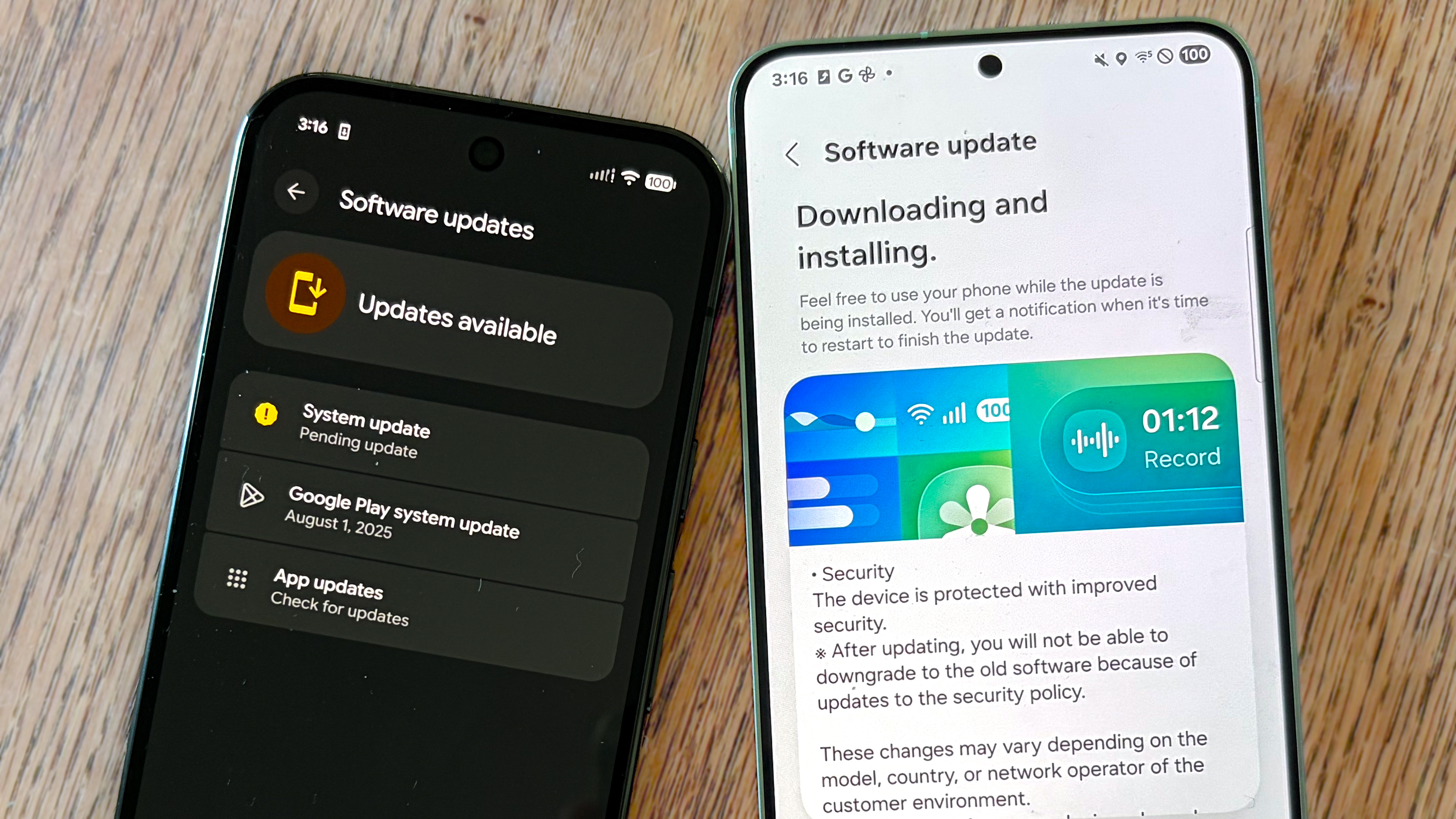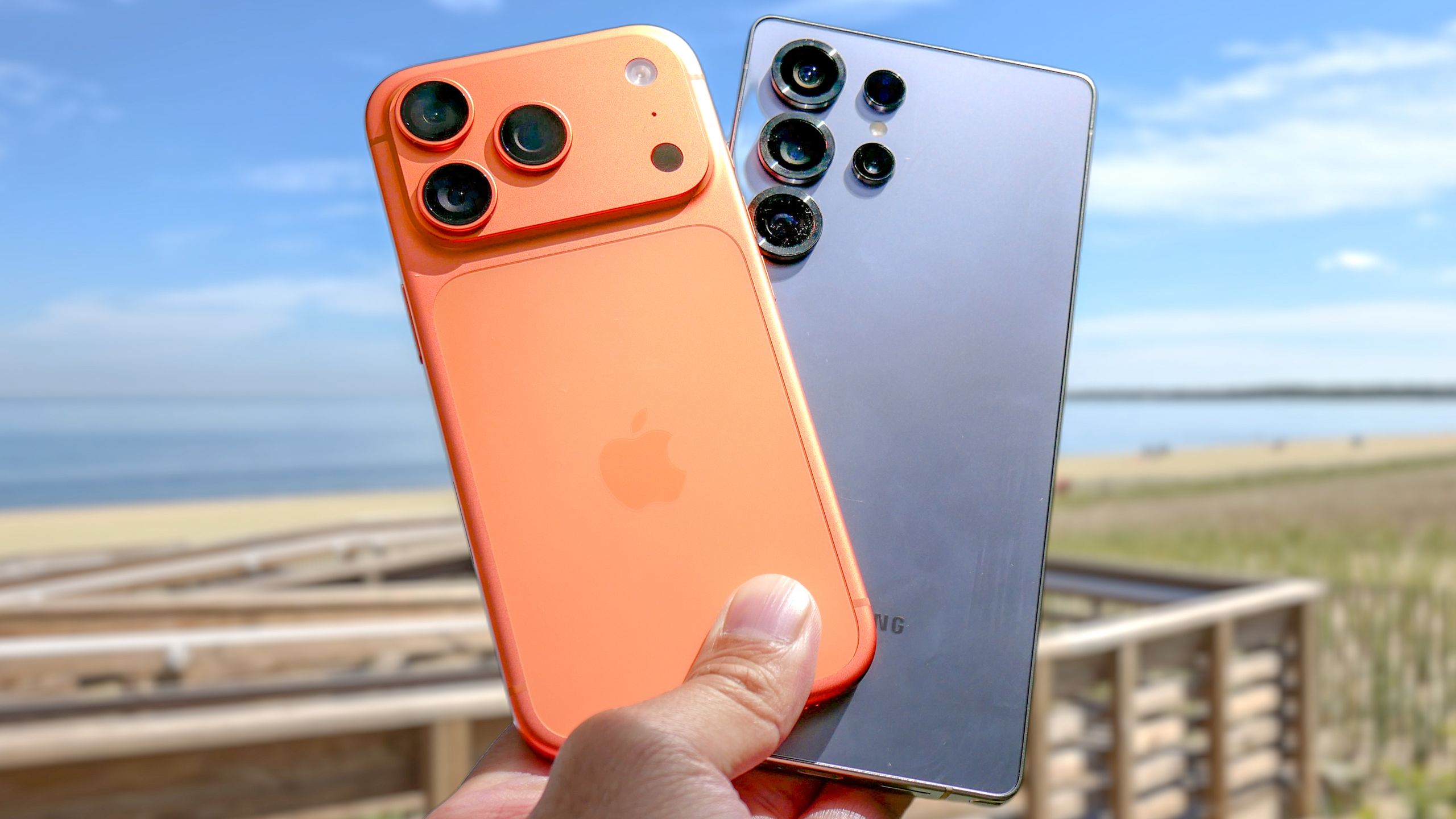I’m an iPhone guy, having used Apple’s smartphones from 2008’s iPhone 3G onward. But that doesn’t stop me from occasionally wondering how the other half lives.
Because I test handsets for a living, I have the opportunity to spend some time with the best Android phones, and there are some pretty impressive devices out there that would tempt me to switch. Google and Samsung both make excellent camera phones,; the battery life of Motorola’s devices never fails to wow me; and anyone who values AI features above all is going to find the tools available on Android phones to be far ahead of what Apple Intelligence offers.
And yet, even with Android’s obvious strengths, I ultimately can’t make the jump from the iPhone. And it’s not just inertia, iMessage or the many tentacles of Apple’s vaunted ecosystem keeping me from jumping ship. I just can’t abide the way Android software updates work. Seriously, how do you Android users put up with this?
Software updates: Android vs. iPhone
Just as iPhones run on Apple’s iOS software, Android devices turn to Google’s Android to provide the look, feel and features found on each device. But that’s where the similarities end.
Android phones released by phone makers other than Google follow a release schedule that could generously be described as haphazard.
When Apple releases an iOS update, it’s instantly available for every supported iPhone device. In addition to the iPhone 17 I use as my daily phone, I have five other iPhones in my office that I use for testing — each one is running iOS 26, and the only reason a device or two might not be on the very latest release is because I haven’t picked it up in a while.
Contrast that with Android, which also saw an update this year. Android 16 came out this past June, so you’d imagine that if you’ve got a supported phone, the software update would have found its way to your device at some point in the last four months.
You would imagine incorrectly.
Some phones are able to run Android 16, particularly if they’re made by Google. But Android phones released by other phone makers follow a release schedule that could generously be described as haphazard.
Let’s consider Samsung, specifically, since it’s undoubtedly the leading Android phone maker. If you’ve bought a phone that came out since the Android 16 release this summer — the Galaxy Z Fold 7 or Galaxy Z Flip 7, say — you’ve got Android 16 on your phone. And the Galaxy S25 flagships released earlier this year have likely seen the update as well.
As for other Samsung phones, well, it’s tough to say. Based on Samsung’s announced release schedule, Galaxy S24 and Galaxy S23 models should have received their updates this month, while Android 16 reaches older Galaxy models sometime between now and November. That’s when older foldables are getting the update, too, and midrange Galaxy A phones have a schedule all their own that depends on the particular model.
See? Clear as mud.
Why Android updates roll out like this

In a sense, it’s unfair to compair the different approaches to software updates for the iOS and Android platforms. Apple makes both the hardware and the software, so it’s in control of the entire process. And since there’s just one iPhone maker, there are far fewer devices needing compatibility checks.
Android is an entirely different kettle of fish. Google makes the operating system, but it’s really just source code that gets released to different device makers, who then tailor Android to their particular devices and add their own software layer, such as One UI for Samsung devices or OxygenOS on OnePlus phones. What’s more, if you bought your phone from a wireless carrier — and in the U.S., that’s how most of us buy our devices — they might weigh in with some compatibility checks of their own. Suddenly, the staggered Android updates make a lot more sense.
Even so, that doesn’t mean I have to like it. Perhaps nearly two decades of iPhone usage has spoiled me, but when new software is ready for my phone, I want to install it on my schedule, not on one that’s dictated to me by a complex update process. That may not matter to Android users — in Reddit threads and discussion forms, the prevailing attitude seems to be “look, the update is going to land on your phone eventually” — but it does matter to me.
After all, I’m not the only person taking advantage of features in an updated operating system. There are also features that app makers can exploit, adding new capabilities to their software. On the iPhone, I can get those new features right away; on Android, I have to hurry up and wait.
Will things ever change?
There’s been an effort to at least pick up the pace between when Android updates are ready and when they actually arrive on your phone. About a decade ago, Google launched Project Treble, which separated out the core Android experience so updates could be pushed out to phones more seamlessly. These days, Google uses a trunk-based approach to development that’s been credited for speeding up Android’s release schedule.
Still, the very nature of the Android ecosystem where a large number of device makers are producing a substantial amount of phones means the update process is never going go as smoothly as it does for the iPhone and its more limited array of models. For the vast majority of Android users, that’s likely not to matter, though it’s just as likely to deter would-be switchers like me.
In a sense, the best thing Google and Android phone makers can do is to keep doing what they’re already doing in finding ways to speed up new version releases. At the same time, they need to keep adding standout features to the point where staggered releases become something folks like me are willing to live with and not something that puts us off the platform.
More from Tom’s Guide
Back to Mobile Cell Phones


